There are many good reasons to visit Marvão – a beautiful fortified hilltop town in Alentejo’s interior - but this is not the place for a day trip from our house.
With a view over Spain, it’s more than four hours one-way, not giving much time for lunch or dinner at the fabulous Mil Homens restaurant, or to stay in the stunning pousada, or to do a sunrise walk around the castle and the town’s walls as we did a couple of years ago.
Roman' Alentejo
Two whole new worlds opened up for us this week as we embarked on an Alentejano adventure while simultaneously entering a new era of solar dominance. We embarked on a road trip across our region in search of wine, marble and blankets while our brand new solar panels were charging our batteries like never before.
But in pursuit of a bargain we can do eight-hour round trips, and the purpose of the drive was to meet a second-hand talha salesman.
Talhas are the giant clay amphorae used to make wine since Roman times which I have written about before, and the surge of interest in natural winemaking using these pots has led to some hefty inflation in the informal talha market.
Wine will be a big part of our tourism theme at Vale das Estrelas, and so we need talhas for decoration – and possibly even to make our own wine – so we wanted something rustic for the entrance and something practical for the wine cellar.
It turned out to be not quite as easy as we had hoped.
With the roofs on all the new buildings, the focus of our project has naturally turned to the interiors, and while I’m busy making colourful flow charts for electrical and water infrastructure, Ana is running the administration of the interiors.
As I’ve hinted at before, this includes hours trawling Facebook Marketplace for deals that match the style she’s developing for the interior design.
With an opening date pencilled in for the end of next March we can’t be waiting to gather furniture, ornaments, materials and everything else we’re going to need once the floors are down, the walls are plastered and the windows are in.
Buying through The Facebook needs flexibility and quick decision making, and Marvão isn’t the first place where we’ve dropped everything in pursuit of a deal (but is the furthest...so far).
The other night Ana stumbled across a printers’ table – a large cabinet with many drawers to store the different sizes and fonts of typographic lead letters which would have been assembled on the desk before being delivered to a printing press.
I remember the excitement of the presses rolling at the Newcastle Evening Chronicle where I started out in journalism many years and where typography had recently been replaced by computers.
On the occasional day I produced a story worthy of holding the front page, I would go down to the printing halls minutes after sending my copy over, with the adrenaline of the deadline still pumping, to watch my words being applied to paper and then bundled off onto the streets.
I didn’t quite understand Ana’s vision for where the piece would fit in, but confident in her eye for design (and a bargain) we jumped into the car and headed to the Algarve at 7pm.
It was dark when we loaded the drawers and the cabinet into the car, but on seeing them I understood Ana intended to use the many-partitioned drawers vertically – as picture frames of tiny compartments to fill with colour or ornaments.
And what a great reception desk!
Of course with the acquisitions in full flow, we will need somewhere to store all the new old stuff until we can get them placed in the buildings.
And securing some water-tight cover came into focus as meteorological autumn officially began on September 1st and temperatures behaved accordingly, dropping from the mid-30s Celsius to mid-20s in a couple of days.
We caught the edge of an Atlantic Storm which soaked much of Portugal.
It brought our first trickle of rain in months, and a rush to cover topless Siouxsie the Suzuki and to reconnect the gutters to the depleted drinking water tank.
The days of regular weather app watching have returned – even though rain in September often preceeds a second summer in October (and is good for Medronho Jorge’s harvest as it fattens up the fruit nicely).
But this year things could be different and lots of welcome rain could be coming our way courtesy of the El Niño weather phenomenon, if it does what the experts are predicting it might in Portugal.
As an aside (and as a geographer) all this climate stuff fascinates me, and The Economist did a great job of explaining El Niño the other week, and commenting on how global warming will amplify its impact.
In short, for us in Iberia it means higher temperatures – and the nearby ocean helps protect our valley against that – but also more rainfall and more intensive rain showers.
It’s what we’re planning for...and why we met Vitor André and his partner last week.
Our off-grid water plans revolve around being able to capture and keep all the storm rain we can harvest from the roofs, patios and solar panels...and that is potentially a lot of water.
With budgets top of mind, Ana’s intensive online research introduced us to Vitor’s pillow tanks.
Anything hard and plastic that stores more than about 15,000 litres of water must be dug into the ground or reinforced by concrete and so the only affordable and practical solution for 200,000 litres is a large plastic bag on a piece of flat ground in the forest.
Bring on pillow tank time.
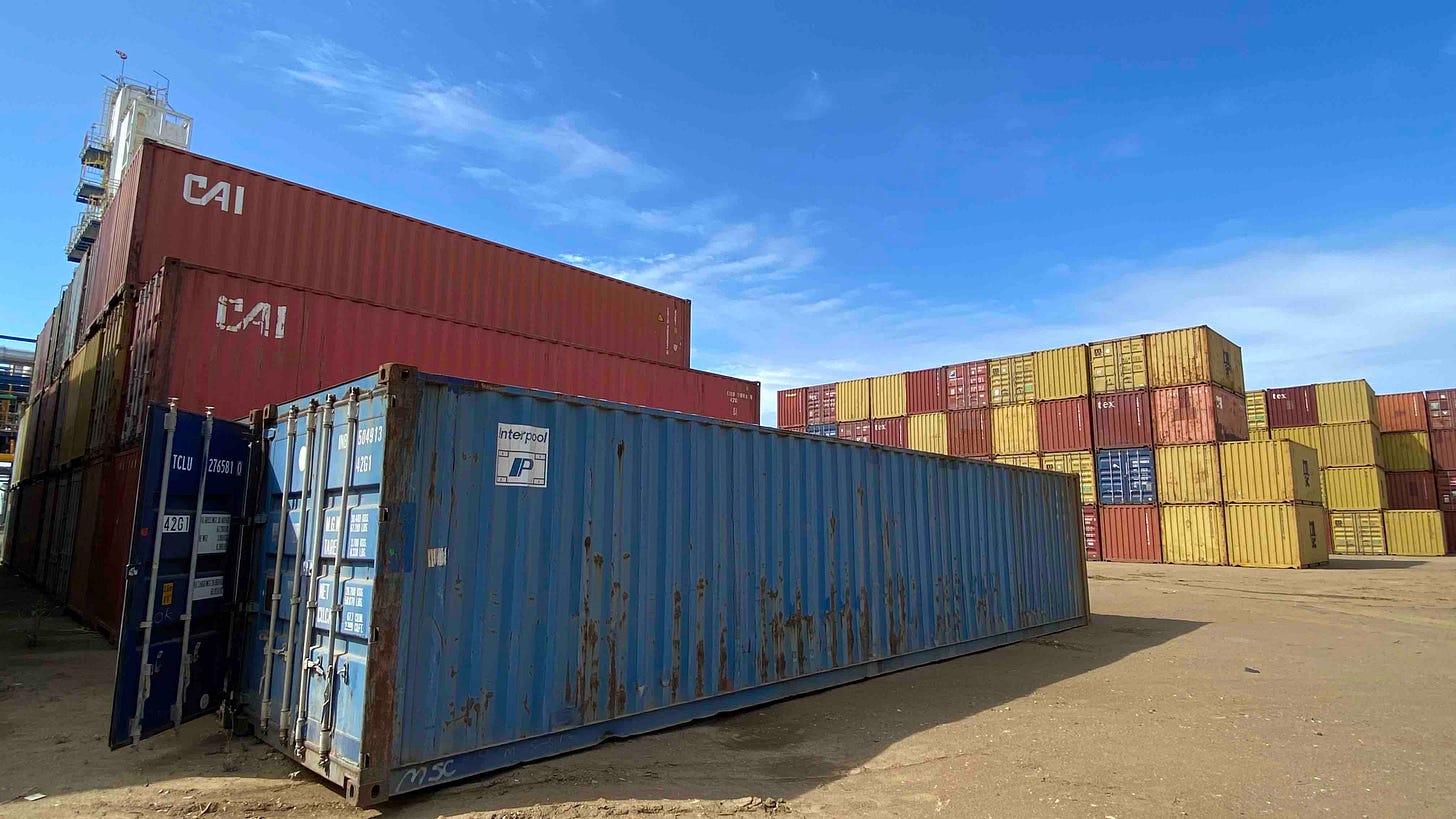
And the pursuit of storage space with affordability also took us to a large shipping container depot.
We need a technical room for our water treatment station, and inspired by friends Joep & Vera we’ve decided to buy a container rather than build a small brick house to also provide us with watertight storage now and in the future.
They look very stark at the port, but with a coat of paint, a few windows and a shade in front they will be an affordable additional shed on our hilltop...especially for farming equipment in the future.
Great beds are probably the most important thing we need to invest in for the interiors and we’ve had some top reviews of the mattresses we bought for the guesthouse, most recently from the Lisbon family.
Ana’s sisters are like buses...you don’t see one for ages and then they both arrive at once...well, in the same week at least.
Rita and Pasi stayed a night en route from the Algarve back to Lisbon before Diogo and Valpuri were due back at school.
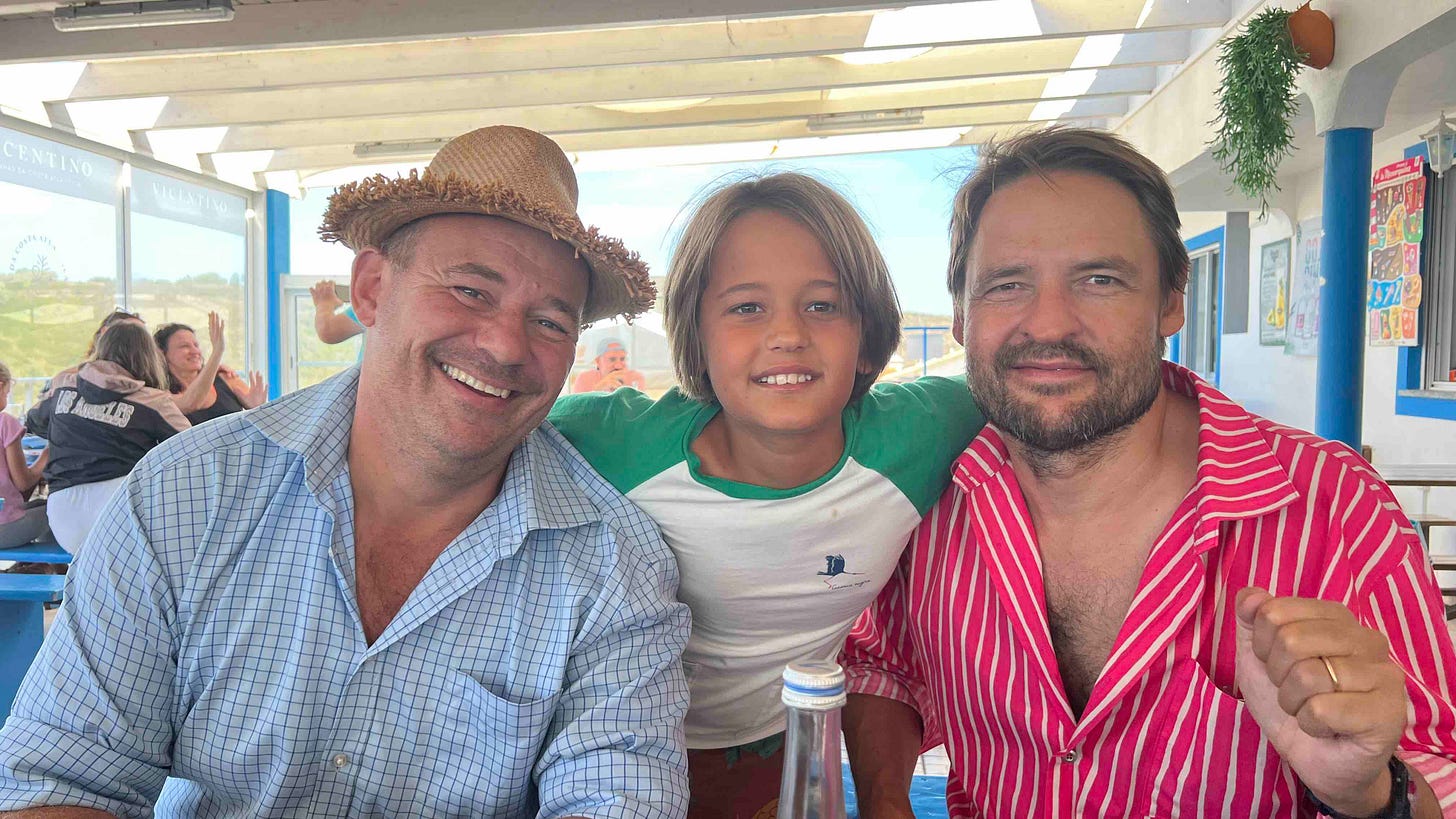
And Maria João and (El) Nuno enjoyed a couple of nights in comfort after a hard day on the beach without any of us – yet again – managing to catch any fish at all.
The beds got the thumbs up, and while our supplier bought them from the UK – before Brexit kicked in – they are now being supplied from Ireland and are even better.
Just how good the final beds will be is all down to the Excel sheet and the budget...which was helped by Ana’s tough negotiations over the talhas.
Our talha day trip to Marvão included a stop at the brilliant Estremoz Saturday market for lunch and a few extra acquisitions, and took us on to António the clay-pot peddler’s yard.
The price had doubled by the time we got there, but had halved again by the time he delivered the four talhas to us...some days later, once he realised we wouldn’t be paying estrangeiro (foreigner) prices.
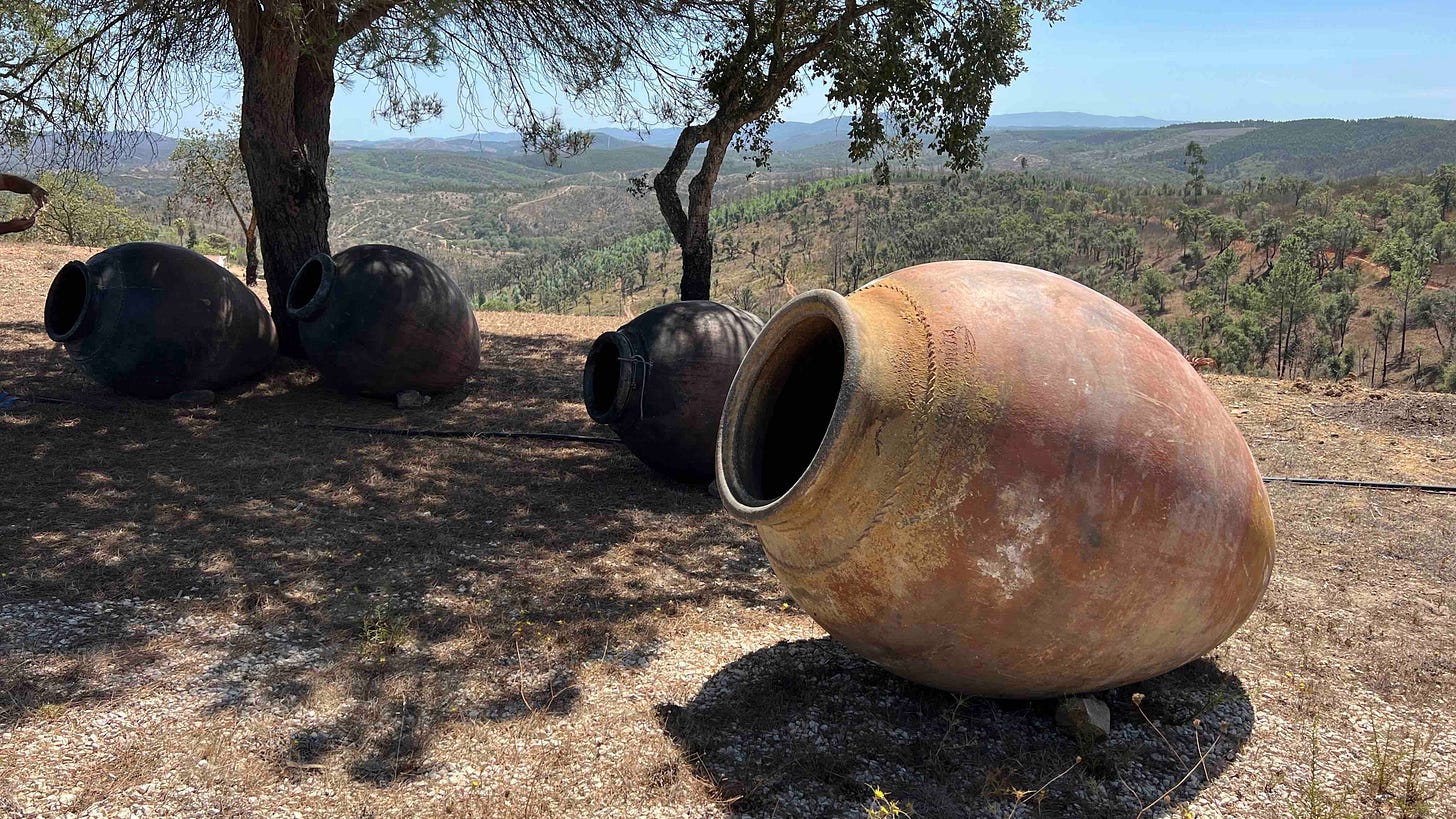
The amphorae date from the late 1800s, two are coated inside ready for some winemaking, which we might even try to do next year with some bought-in grapes.
They look great on the top of the hill – at least until we can get them into the wine cellar – but the most precious thing we received all week was the most fabulous charroa plough from our friend John Rourke.
He tragically lost his wonderful wife Isabel earlier this year – far too young – and he came to see us for lunch with his son James who has been staying.
John has been restoring some of the old equipment from the family farm, and as he and James carried the beautifully painted plough from the car he said Isabel had promised to gift us one for the lodge...and so here it was.
It’s under cover while we decide on the perfect place to put it...to remind us of Portugal’s agricultural heritage and in memory of Isabel.

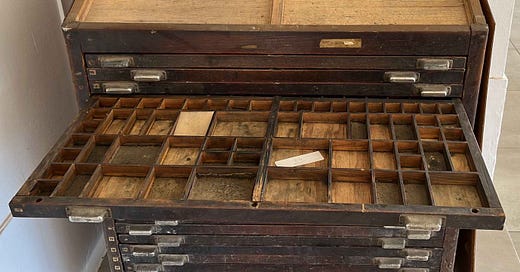



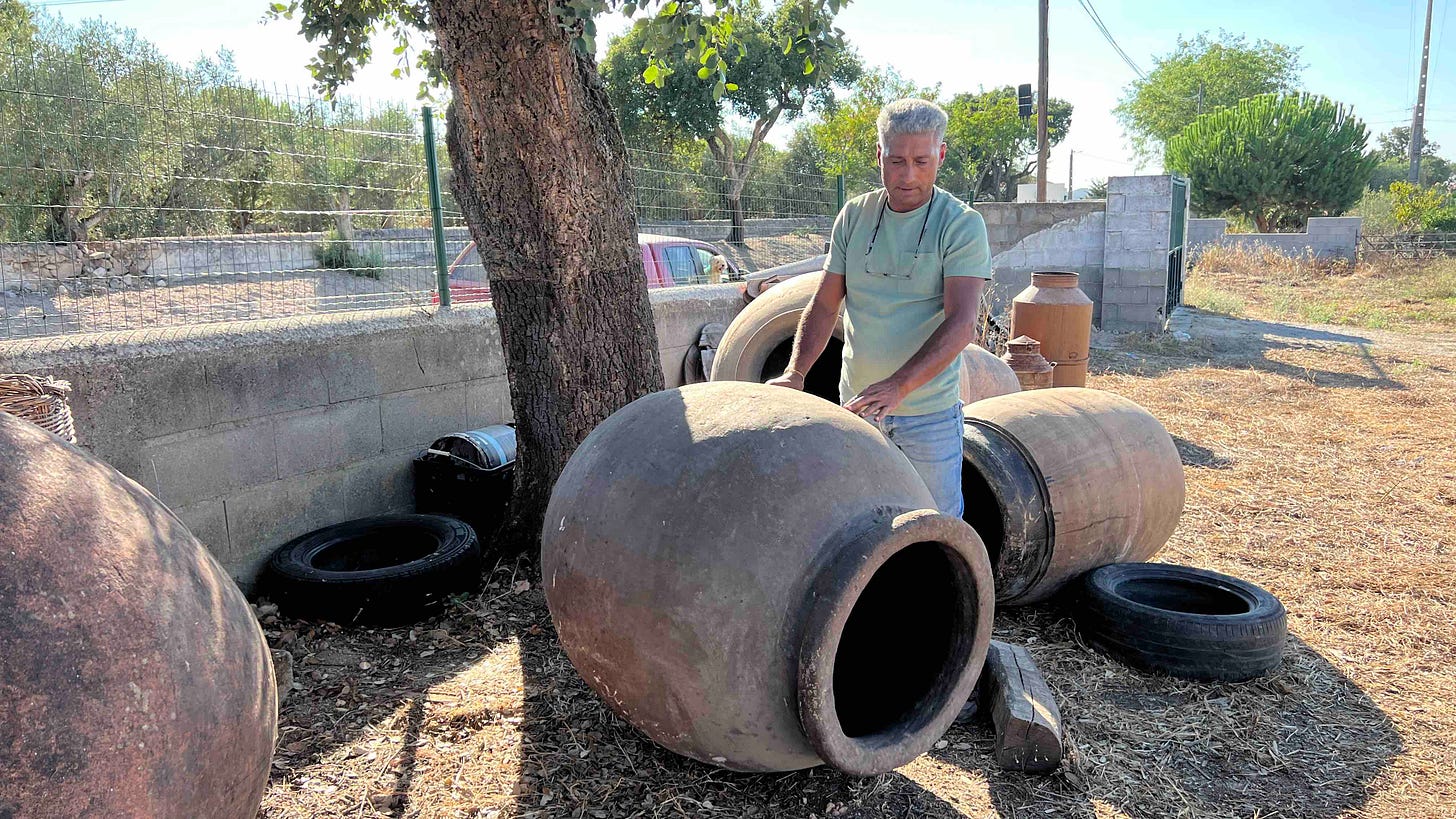

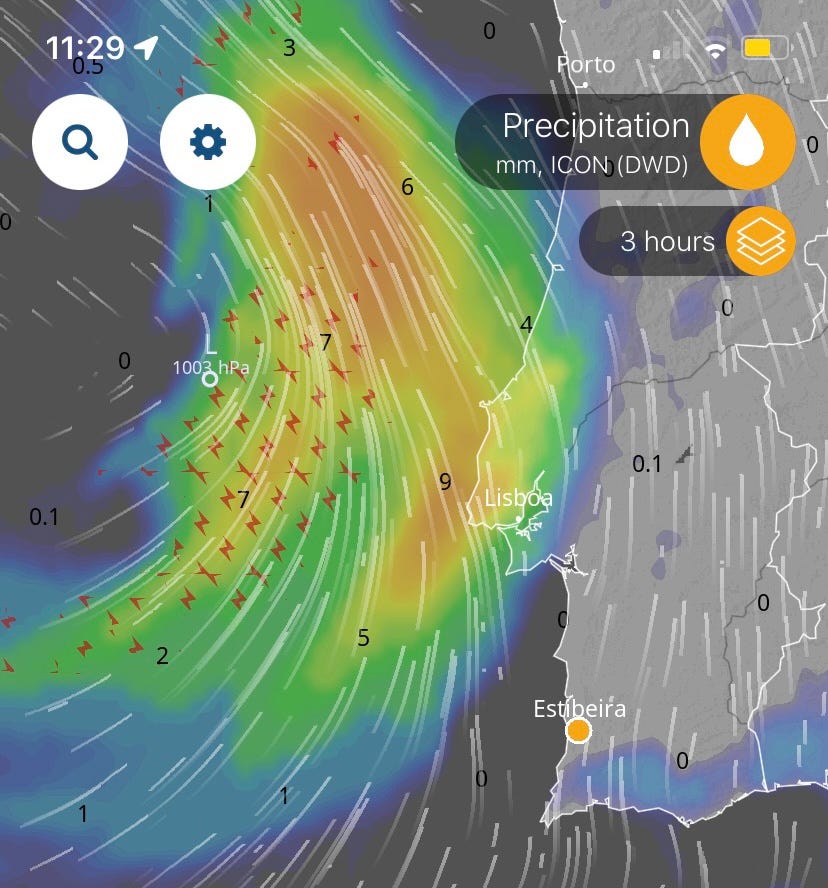
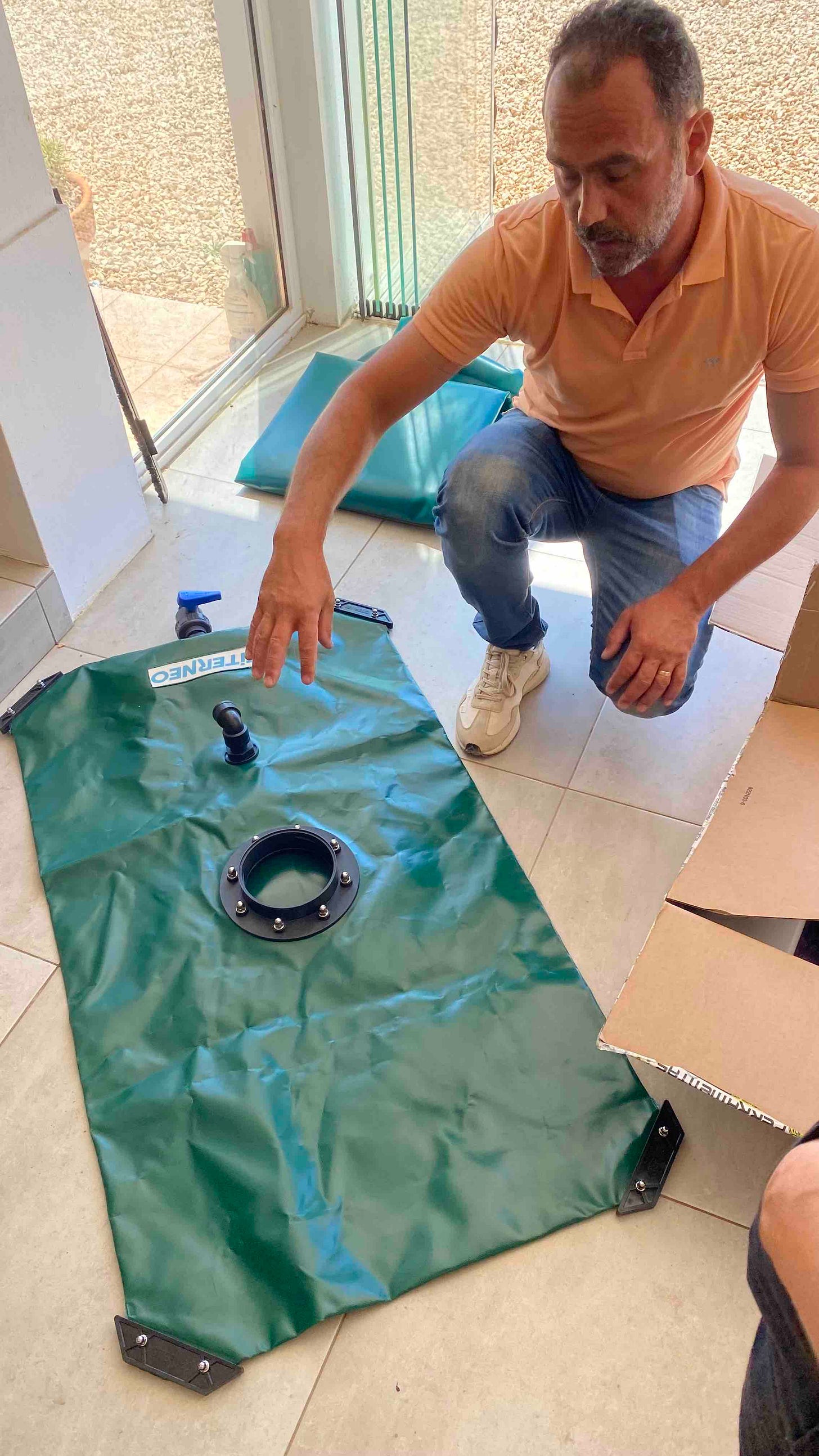
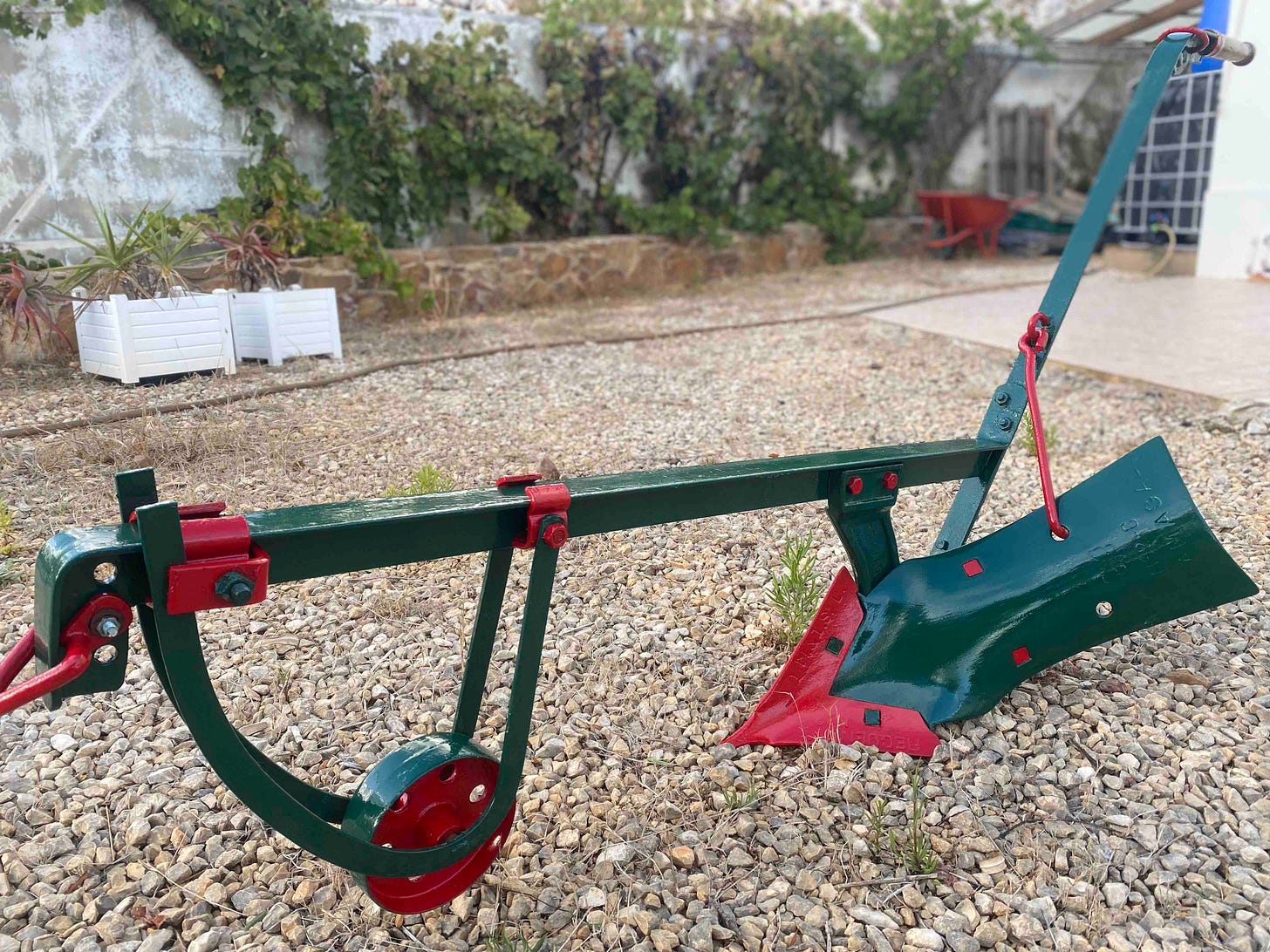
Dear A&A, if you do another sortie to Marvão and stop to eat at ease try o Fago (at the top - obsessively offering local produce - and they have wine from Howard's Folly), Rio Sever on the river (Portagem) and recently reopened d'Oliveira opposite Ammaia, the ruins of the Roman town (the site is not yet quite as developed as Housesteads). And try the real ale from the Barona brewery in Sto António or from their café in Castelo de Vide. Although a long way from the sea, Marvão has the advantage of access to wines and cheeses from 2 countries :).
Yes, Estremoz Saturday market is not to be missed, a real and rare highlight of rural Portugal.
Kind regards, Bernard
Oh, I am jealous of your type case, it has gone to a good home. I spent many happy hours learning to set type at Salford Art College in the early sixties. (And now thank goodness for modern typesetting technology). Thanks Alastair for another welcome good read, please keep them coming.